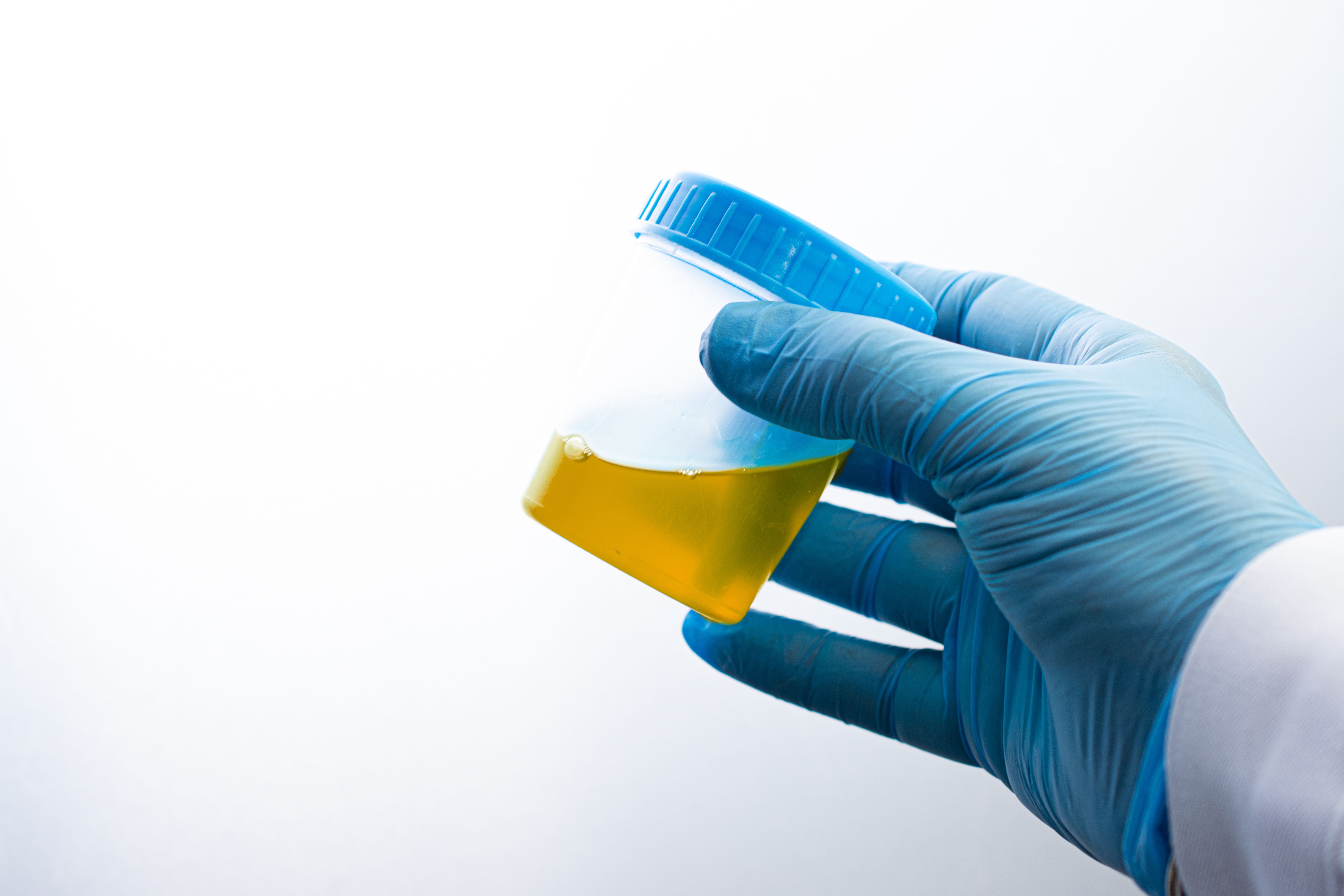LC–MS/MS Helps Detect ε-(γ-glutamyl) Lysine as Transglutaminase 2 Biomarker in Human Urine
A biomarker with significant clinical and analytical potential in an enzyme present in many human diseases was determined at higher efficiency using liquid chromatography coupled to tandem mass spectrometry (LC–MS/MS).
A study led by Lien Dejager of UCB Pharma in Braine l’Alleud, Belgium, proposed the use of liquid chromatography coupled to triple-quadrupole, or tandem, mass spectrometry (LC–MS/MS) in urinalysis to detect and quantify ε-(γ-glutamyl) lysine, an isopeptide seen as a significant biomarker for the enzyme transglutaminase 2 (TG2) (1).
Urine analysis in the laboratory. Medical urine test. Urine sample for laboratory analysis. | Image Credit: © Giovanni Cancemi - stock.adobe.com

TG2 is one of a family of enzymes that serve as catalysts for post-translational modification of a variety of proteins through the formation of ε-(γ-glutamyl) lysine cross-links. The enzyme is thought to be involved in wound response but has also been observed to be continually upregulated in chronic diseases distinguished by persistent tissue damage. In humans, some of these illnesses include pulmonary fibrosis, chronic kidney disease, and cirrhosis of the liver.
The 17-author study, published in the Journal of Chromatography A, posits that the levels of ε-(γ-glutamyl) lysine cross-links in biofluids such as urine could have significant function as diagnostic or monitoring biomarkers, and that a more rapid, efficient, and selective method for their detection, namely LC–MS/MS, could be useful in clinical decision-making and eventually, shorter clinical trials.
To date, the most widely accepted method of ε-(γ-glutamyl) lysine detection has been amino acid analysis, which is based on hydrolysis of proteins down to their composite amino acids, leaving the target isopeptide intact. Over a more than 30-year period, the chromatography deployed in this analysis has improved, especially in distinguishing the minor isopeptide peak from major amino acid peaks. But limitations still exist, particularly where levels of cross-linking are low relative to background protein levels, which is true not only in urine, but also in blood, bronchoalveolar lavage fluid (BALF), and spinal fluid.
Associated techniques that have been employed in attempts at further refinement include mass spectrometry (MS), strong cation exchange chromatography, and Fourier transform infrared spectroscopy (FT-IR). The LC–MS/MS method chosen for this study was developed from a mass spectrometry method published in 1984 that quantified ε-(γ-glutamyl) lysine in plant proteins, and was preceded by the initial steps of protein precipitation that removed major salts followed by a digestion process.
The sensitivity of the approaches concluding with the LC–MS/MS analysis of human urine showed detection of as low as 0.1 ng/mL of ε-(γ-glutamyl) lysine with a precision of less than 20% coefficient of variation (CV). However, limitations remain. Levels of ε-(γ-glutamyl) lysine in urine may typically fall within a range of 0.1–10 ng/mg, meaning some samples will be below the limit of quantification. The researchers suggested patients with some proteinuria, therefore, might be best suited for this analysis. But the study also said this newly devised method represents a significant improvement over the prior amino acid process, and could be used to monitor disease progression in cases where TG2 plays a role in pathology.
Reference
(1) Dejager, L.; Jairaj, M.; Jones, K.; et al. Development and validation of a liquid chromatography–triple quadrupole mass spectrometry method for the determination of isopeptide e-(g-glutamyl) lysine in human urine as biomarker for transglutaminase 2 cross-linked proteins. J. Chromatogr. A 2023, 1699, 464002. DOI: 10.1016/j.chroma.2023.464002
Advances in Non-Targeted Analysis for PFAS in Environmental Matrices
March 27th 2025David Megson from Manchester Metropolitan University in Manchester, UK, spoke to LCGC International about the latest developments in non-targeted analysis (NTA) of per- and polyfluoroalkyl substances (PFAS) in environmental matrices based on a recent systematic review paper he has collaboratively published (1).
Study Explores Thin-Film Extraction of Biogenic Amines via HPLC-MS/MS
March 27th 2025Scientists from Tabriz University and the University of Tabriz explored cellulose acetate-UiO-66-COOH as an affordable coating sorbent for thin film extraction of biogenic amines from cheese and alcohol-free beverages using HPLC-MS/MS.
Quantifying Microplastics in Meconium Samples Using Pyrolysis–GC-MS
March 26th 2025Using pyrolysis-gas chromatography and mass spectrometry, scientists from Fudan University and the Putuo District Center for Disease Control and Prevention detected and quantified microplastics in newborn stool samples.
Multi-Step Preparative LC–MS Workflow for Peptide Purification
March 21st 2025This article introduces a multi-step preparative purification workflow for synthetic peptides using liquid chromatography–mass spectrometry (LC–MS). The process involves optimizing separation conditions, scaling-up, fractionating, and confirming purity and recovery, using a single LC–MS system. High purity and recovery rates for synthetic peptides such as parathormone (PTH) are achieved. The method allows efficient purification and accurate confirmation of peptide synthesis and is suitable for handling complex preparative purification tasks.







